Most travelers think of the Dodecanese islands and immediately picture Rhodes or Kos. But tucked away in this sun-soaked chain is Tilos—a little island that’s become my secret escape whenever I need to breathe, slow down, and remember what real peace feels like, far from the crowds.
Tilos gives nature lovers a rare mix of untouched beaches, wild hiking trails, and a sense of calm I haven’t found anywhere else in Greece. The island protects over 650 plant species and 150 bird species within its borders as a nature reserve. Even cooler? Tilos runs on 100% renewable energy, earning the well-deserved title of the “Green Island” of Greece.
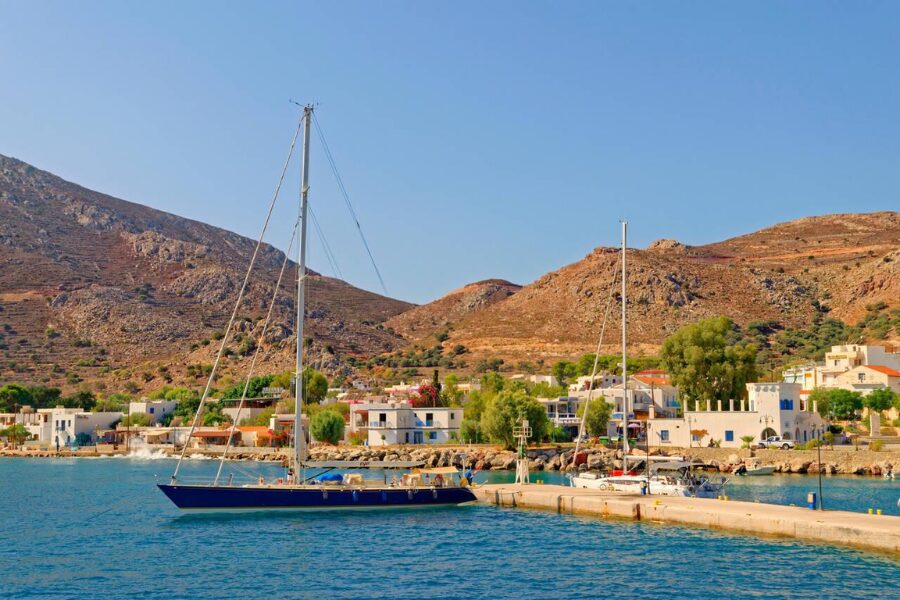
You’ll find crystal-clear water for swimming, ancient trails snaking up to hidden chapels, and views that make you pause. It’s the kind of place that feels quietly authentic and a little undiscovered. Let me share why I keep coming back—along with some practical tips about its quirky museums, fascinating history, and how to get here if you’re craving a real break in the Dodecanese.
Why Tilos is a Sanctuary for Nature Lovers
Tilos stands out in the Dodecanese as a protected ecosystem with more than 150 rare plant species. The island runs entirely on renewable energy, which is honestly kind of amazing.
Here, you find tranquility that’s hard to put into words. No crowds, no blaring nightlife—just the sound of wind through the sage and the distant call of a bird.
Natura 2000 and Protected Wildlife Refuge
Tilos and its nearby islets belong to the Natura 2000 network. That means the whole area gets special protection for its unique ecosystem.
More than 150 rare or endemic plants grow here, and some exist nowhere else on Earth. That’s wild, right?
Bird watchers love it. The island attracts around 125 bird species, both resident and migratory. I’ve spotted everything from familiar Mediterranean birds to rare visitors, especially during migration.
The Charkadio Cave adds a twist to the story. Scientists uncovered a dwarf elephant cemetery inside. You can’t enter the cave, but the tiny Paleontology Museum in town displays the bones and fossils.
Strict development rules keep big hotels and commercial beaches out. That means the landscape stays unspoiled, both for wildlife and for anyone wandering the trails.
Green Energy and Sustainability
Tilos became the first fully energy-independent island in the Mediterranean back in 2019. The community uses wind and solar power through a smart hybrid system.
They ditched diesel generators for good. Other Greek islands now look to Tilos as a model for green energy.
Locals started a non-profit called the Ecological Park of Tilos. They work hard to protect the island’s heritage and teach both residents and visitors about conservation.
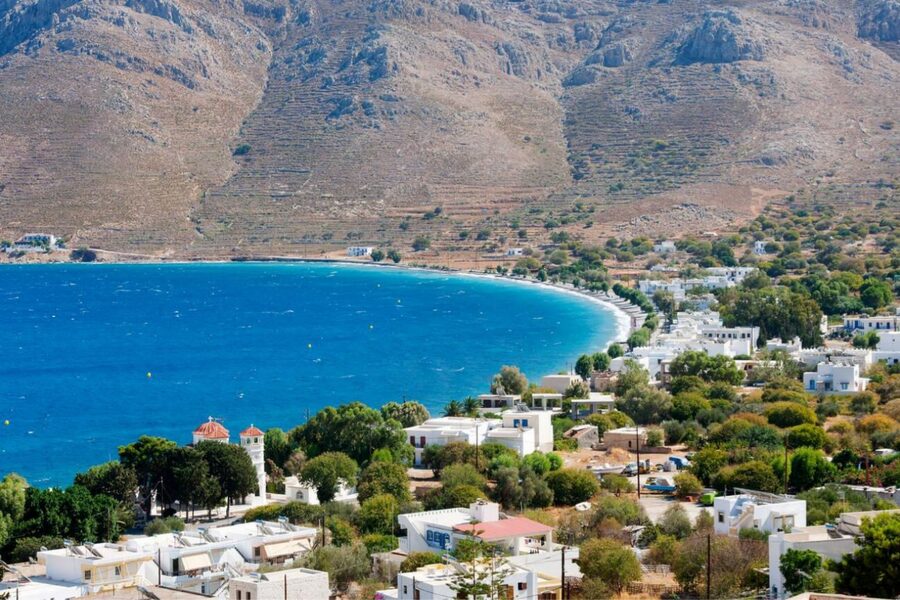
Protecting the green energy system is just the start. Islanders focus on their 400 species of flora and fauna. No wonder people call Tilos “the Green Island of Greece.”
Peaceful Atmosphere and Tranquility
Tilos moves at a pace that reminds me of summers long gone. Days drift by on empty beaches where cicadas are the only background noise.
You won’t find traffic, neon lights, or crowds here. Instead, there are footpaths through sage-covered hills and quiet pebble coves where you might not see another soul.
Tavernas announce the day’s catch in a soft-spoken way. The vibe is real, not staged for tourists.
Most beaches stay wild—no umbrellas, no beach bars. Getting to Letra beach takes a short stroll, which keeps it blissfully quiet.
The two main villages, Megalo Chorio and Livadia, are small and easy to explore. Even in summer, it’s not hard to find solitude on the island’s network of trails.
Beaches with Crystal-Clear Waters and Serene Scenery
Tilos has three main beaches where you can swim in pristine waters and soak up peaceful surroundings. Each one feels different, from family-friendly to totally wild.
Livadia Beach: Easy Access and Family Friendly
Livadia Beach is the easiest option if you want to stay close to the action. It sits right by the main port, so you can walk there from the village.
This is the only beach on Tilos with real tourist facilities. You can rent sunbeds and umbrellas, which is a huge plus for families.
The sand-and-pebble mix makes it comfy for sunbathing, and the water stays calm and clear.
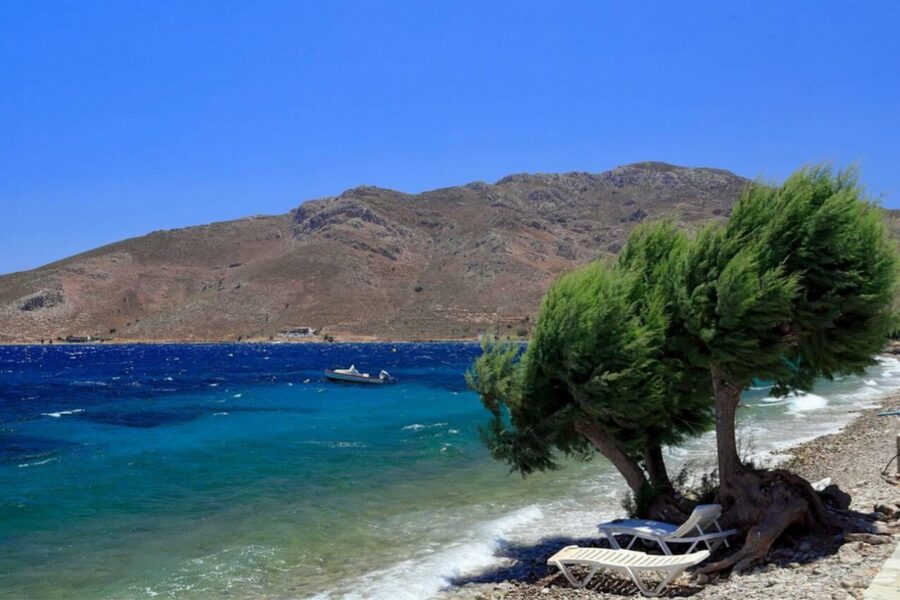
Beach Features:
- Sunbeds and umbrellas
- Walking distance from the port
- Calm, shallow waters
- Sand and pebbles
I love the pops of color from umbrellas along the shore. It’s lively, but never feels packed.
Kids can splash safely in the shallow water. Tamarisk trees offer some natural shade if you need a break from the sun.
Eristos Beach: Camping and Untouched Beauty
Eristos Beach is my top pick when I’m craving nature. This long, golden stretch feels completely untouched.
You can camp here legally, which is pretty rare in Greece. The beach runs for nearly two kilometers along the southern coast.
The water is so clear that I often swim for ages. Hills rise up behind the sand, adding to the sense of seclusion.
What Makes Eristos Special:
- Legal camping
- Nearly 2km of golden sand
- No facilities or buildings
- Hills all around
The beach faces south, so you get sun all day. Even with some gentle waves, the water stays inviting.
Since there are no facilities, I bring my own shade and snacks. That’s part of the charm—there’s a good chance you’ll have big sections all to yourself.
Plaka Beach: Peacocks and Snorkeling
Plaka Beach is where nature and wildlife blend together. Dense greenery grows right down to the water.
Peacocks often stroll around here, which is honestly a delightful surprise. They add a splash of color and personality to any beach day.
The turquoise water is perfect for snorkeling. Rocky patches at the ends of the beach attract small fish.
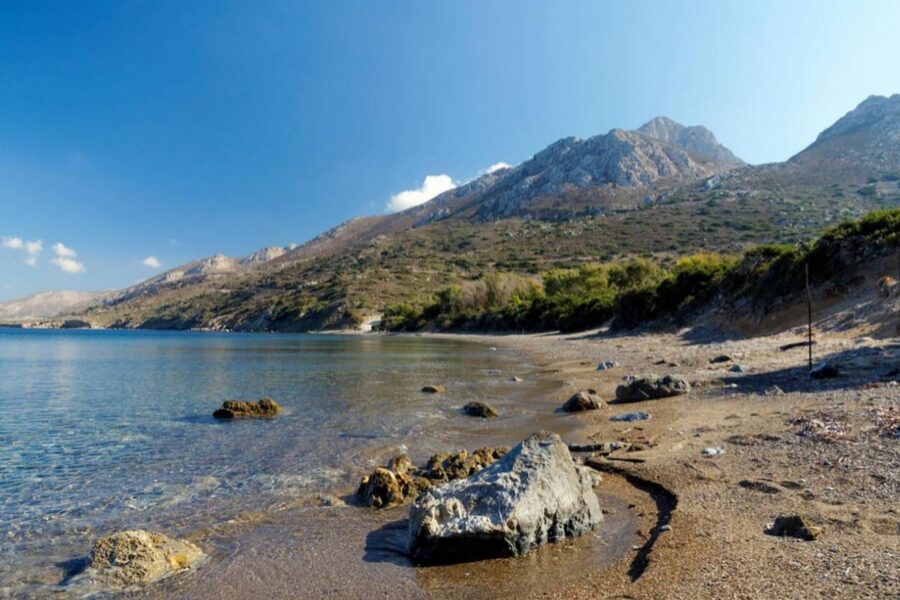
Plaka Highlights:
- Wild peacocks nearby
- Lush, green backdrop
- Snorkeling spots
- Turquoise water
This beach feels more hidden than the others. The greenery offers natural shade and a tropical vibe.
My favorite snorkeling is near the rocks—visibility is great, and there’s always something darting around below the surface.
Exploring Tilos on Foot: Hiking Trails and Scenic Walks
Tilos has over 54 kilometers of marked trails winding through its mountains and linking remote villages to hidden beaches. Because the island is a permanent wildlife refuge, these paths cross landscapes that feel wild and untouched.
Most Spectacular Hiking Routes
The Nature Interpretation Walk is my go-to hike. It’s a 2.5-kilometer trail that starts near the helicopter airport and climbs to the ruins of an Italian observatory on Profitis Ilias peak.
The hike breaks into three sections. The first part is a gentle 15-minute climb past a small church, with info signs about the landscape.
The second stretch is steeper and longer—about 25 minutes. The views open up, and you start to see the whole island laid out below.
The final segment leads you to a spring and a basic refuge where hikers can sleep overnight. Stone markers guide the way, so you won’t get lost.
Wildlife Observation and Birdwatching
Tilos works as a permanent wildlife refuge, making it a dream for wildlife fans. The hiking trails give you great vantage points for spotting birds.
I’ve seen a bunch of species along these routes, especially higher up where the landscape is more open. The lack of thick vegetation actually makes it easier to spot animals.
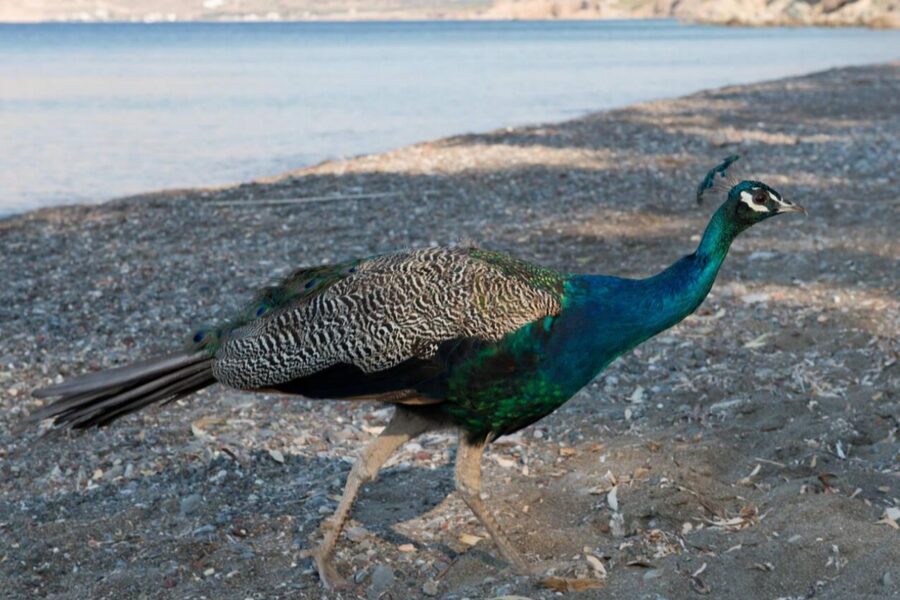
Because the island is so protected, animals don’t seem as wary of people. Early mornings are best for seeing wildlife—everything feels fresher and more alive then.
Connecting Villages and Secret Beaches
The trails link up all the main villages. Livadia is the jumping-off point for most coastal walks, like the ones to Eristos Beach and Plaka Beach.
One tough but rewarding route goes from Livadia through Lethra to Mikro Horio. It takes about three hours and sometimes the path fades into goat tracks, but stone piles help show the way.
The short hike from Megalo Horio to the castle only takes about 20 minutes, but it’s steep. The reward? Sweeping views from the old ruins.
If you’re into secluded beaches, try the Livadia to Despoti Nero walk. It’s rocky and steep, with no shade, so bring water and good boots. The payoff is a quiet beach by a natural spring.
Fascinating Heritage: Castles, Villages, and Abandoned Places
Tilos holds centuries of history in its medieval castle above Megalo Horio, the ghostly ruins of Mikro Chorio, and traditional architecture that whispers stories of the past. These places invite slow exploration—no crowds, just you and the echoes of old lives.
Megalo Horio and the Castle of the Knights
The medieval castle sits high above Megalo Horio. The Knights of St. John built it in the 15th century to defend against Ottoman raids.
I like to hike up in the late afternoon. The sunlight makes the stone walls glow, and the air feels cooler.
From inside the castle, you get views across the whole island. You can see the harbor, the mountains, and even other islands far off.
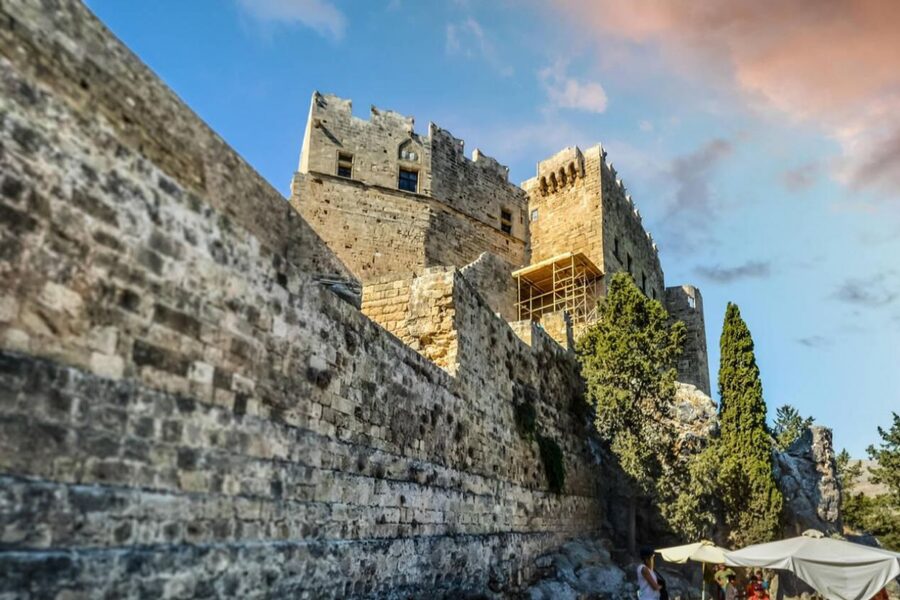
What’s left today:
- Stone walls and towers
- Ancient cisterns
- Foundation ruins
- Panoramic viewpoints
Megalo Horio sits just below, all white houses and narrow stone lanes. It feels timeless.
Mikro Chorio: The Abandoned Village
Mikro Chorio is one of Greece’s most atmospheric abandoned villages. People left in the 1960s, moving to places with easier access.
It’s peaceful and a little eerie. Stone houses with caved-in roofs scatter across the hillside, slowly swallowed by wild plants.
The church is the best-preserved building. Its bell tower still stands, and you can spot faded frescoes inside.
Walking here feels like time travel. You’ll find:
- Old stone homes
- Winding paths
- Bread ovens
- Overgrown terraces
Nature is taking the village back. Wild herbs poke through the stones, and flowers bloom where people once lived.
Town Hall and Traditional Architecture
The town hall in Livadia stands out with its classic Dodecanese style. It’s a good example of how people built for both beauty and the harsh Mediterranean climate.
Locals used stone and time-tested techniques—thick walls, small windows, and flat roofs. These features keep homes cool and sturdy.
Around Tilos, you’ll spot similar touches. Whitewashed walls, wooden shutters painted in bright blues or greens, and a sense of tradition that’s still alive.
A Journey Back in Time: Dwarf Elephants and Unique Museums
Tilos has one of Europe’s most fascinating paleontological stories—dwarf elephants once wandered here until about 4,000 years ago. When I first heard about the dwarf elephants, I couldn’t believe it either.
Charkadio Cave, not far from Megalo Chorio, revealed their secrets. Skeletal remains of these miniature elephants now fill specialized museums, making Tilos stand out among Greek islands.
Charkadio Cave and Harkadio Cave Discoveries
Charkadio Cave sits just 2 kilometers south of Megalo Chorio. This is where people uncovered the bones of forty dwarf elephants, plus fossils of other ancient animals.
These elephants were tiny compared to the ones we know today. Imagine seeing one only 120-150 cm tall—half the size of modern elephants.
Scientists say these elephants roamed Tilos around 45,000 years ago. Over time, the elephants shrank because island life forced them to adapt.
On small islands, animals often become smaller to cope with limited food and space. Evolution did its thing over thousands of years.
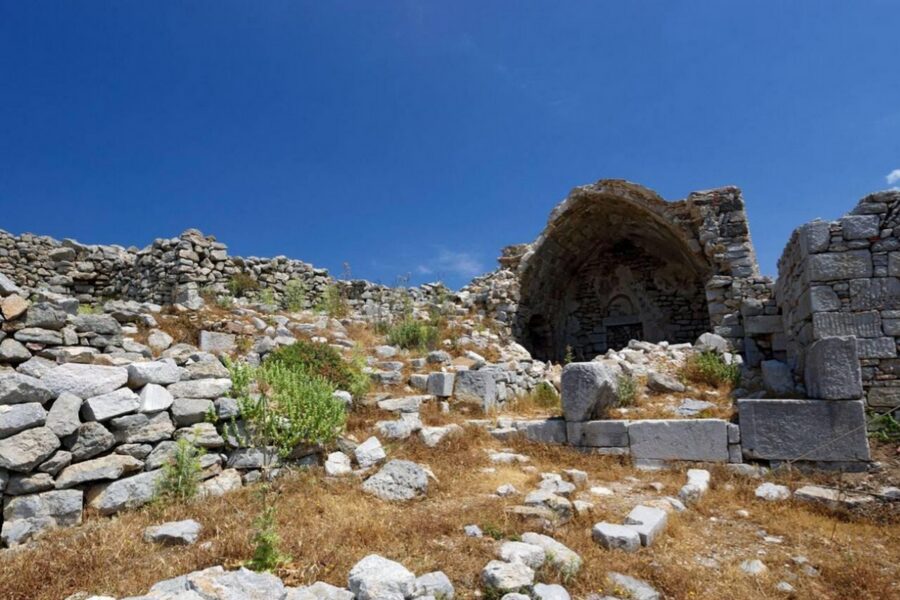
Volcanic eruptions from Santorini and Nisyros blasted Tilos with lava. This volcanic blanket protected the bones inside the cave for millennia.
Museum of Dwarf Elephants
The Museum of Dwarf Elephants genuinely surprised me—there’s nothing else like it in the world. It opened in summer 2020, right by the parking area outside Charkadio Cave.
Inside, you’ll find a striking collection of dwarf elephant bones and fossils. Visitors get up close to actual skeletons and learn how these animals survived here.
The museum also tells the story of Tilos once connecting to Asia Minor about 12,000 years ago. Elephants walked over when the island was part of the mainland, then got stranded as sea levels rose.
Key Museum Features:
- Original dwarf elephant bones
- Interactive displays about island evolution
- Information on Tilos’s ancient environment
- Educational exhibits about prehistoric animals
Paleontological Collection and Museum
Tilos’s paleontological treasures go beyond elephant bones. Fossils of turtles, deer, and other creatures that shared the island thousands of years ago fill the displays.
Back in 1994, Megalo Horio’s Town Hall hosted the first exhibition of these finds. Many artifacts later moved to the new museum near Charkadio Cave.
The Diachronic Archaeological Museum of Tilos also showcases some paleontological gems. This spot covers Tilos’s story from 4,000 BC all the way to the 17th century, including the time of the dwarf elephants.
Together, these museums weave a vivid tale of Tilos’s prehistoric past. They prove Tilos was home to Europe’s last elephants—a big deal for anyone curious about ancient Mediterranean wildlife.
Getting to Tilos and Exploring the Dodecanese
Tilos nestles between Rhodes and Kos, making ferry access pretty straightforward. The whole Dodecanese region is a playground for island hopping, and Livadia is hands-down the best base for exploring.
How to Reach Tilos from Rhodes and Kos
You’ll need to catch a ferry to Tilos because there’s no airport. I usually start from Rhodes since it offers the most frequent sailings.
From Rhodes:
- Ferries take 2.5–3 hours
- Daily departures run April through October
- Blue Star Ferries and Dodekanisos Seaways cover the route
- Expect 1–2 ferries per day in summer
From Kos:
- Fewer sailings compared to Rhodes
- The trip takes 4–5 hours
- Often requires a connection in Nisyros
- Always check schedules before planning
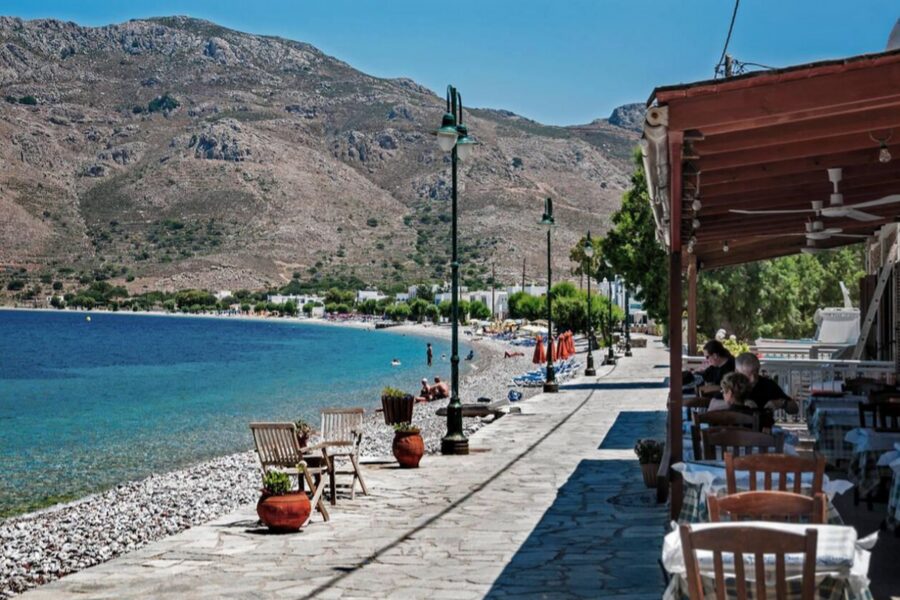
Booking ferry tickets online is a smart move in summer. Boats pull into Livadia port, so reaching your hotel or guesthouse is easy.
Weather sometimes messes with ferry schedules. Strong winds can cancel boats, so I leave wiggle room in my island hopping plans.
Island Hopping: Nisyros, Halki, and Symi
The smaller Dodecanese islands near Tilos make for unforgettable day trips or longer escapes. Each one brings something different to the table.
Nisyros is the closest, just 30 minutes by ferry. The volcanic crater there feels otherworldly, and its black sand beaches are nothing like Tilos’s.
Halki charms with its sleepy fishing village vibe. The pastel houses by the harbor beg for photos. Ferries run 2–3 times a week from Tilos.
Symi steals the show with neoclassical mansions stacked up steep hillsides. It gets crowded with day-trippers from Rhodes, but if you stay overnight, the evenings turn magical and quiet.
Ferry schedules shift with the seasons. I always double-check timetables at the port or online—sometimes boats only run on certain days.
Where to Stay: Livadia and Beyond
Livadia is the heart of Tilos, with the port, shops, and most places to stay. For short visits, I always pick Livadia for pure convenience.
You’ll find small hotels, guesthouses, and apartments just steps from the sea and restaurants. Most offer sea views and that warm Greek welcome.
Livadia perks:
- Walkable to the ferry
- Plenty of tavernas and cafes
- Livadia Beach is right there
- Quick access to hiking trails
Megalo Chorio is a quieter, more traditional mountain village. It’s the capital, but you’ll need a scooter or car to get around easily from here.
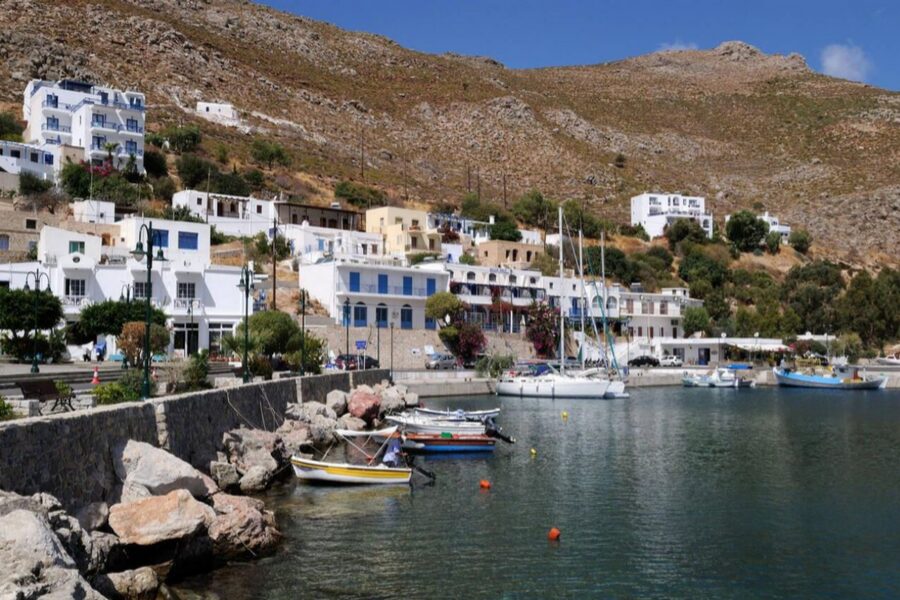
If you’re coming in July or August, book early. Tilos doesn’t have endless rooms, and the best spots fill up fast in peak season.
Frequently Asked Questions
Tilos is a haven for wildlife lovers, hikers, and anyone into conservation. Rare birds thrive here, hidden beaches wait to be discovered, and ancient ruins offer peaceful escapes.
What are the top attractions for nature enthusiasts in Tilos?
Eristos Beach is my go-to with its golden sand and clear waters. Agios Antonios Beach, wrapped by dramatic cliffs, is a showstopper for swimming and snorkeling.
The Castle of Messaria sits high on a hill with sweeping views. I always find peace at the Monastery of Agios Panteleimon, tucked away in nature.
Lush valleys on the island are perfect for plant lovers and photographers. Mikro Chorio, now abandoned, tells a quiet story of nature reclaiming old villages.
What wildlife can be observed on the island of Tilos?
Tilos acts as a nature reserve—no hunting allowed, which protects rare species. The variety of birds here is pretty amazing.
I often spot Mediterranean birds along the coast and in the valleys. The waters around the beaches teem with marine life, making snorkeling extra rewarding.
Conservation efforts here keep native species safe—something you don’t see on busier Greek islands. Spring and early summer are the best times for wildlife watching.
Can you recommend some hidden natural spots in Tilos for a serene experience?
Agios Antonios Beach takes effort to reach, either by boat or a tough hike, so it stays quiet. Those cliffs and the solitude? Worth it.
The valleys between Megalo Chorio and Livadia have peaceful hiking paths with wildflowers and hardly any tourists. It’s a photographer’s dream.
A few secret coves are only accessible by foot along the coast. Exploring the abandoned Mikro Chorio village always gives me a sense of calm—even if it’s a bit eerie.
What are the best hiking trails in Tilos for nature lovers?
The trail to Agios Antonios Beach is tough but delivers wild beauty at every turn. You’ll walk through hills and end up on the coast.
Trails between villages pass through green valleys and show off the island’s plants and rocks. These paths highlight Tilos’s natural diversity.
Shorter hikes around the Castle of Messaria give you big views of the sea and nearby islands. I love early morning walks for the cool air and soft light.
How do the conservation efforts in Tilos contribute to its status as a nature paradise?
Tilos leads the way as the Mediterranean’s first “Green island,” running on solar and wind power. That shift cuts down on environmental impact.
Strict hunting bans keep the island a true nature reserve. Because of this, rare species thrive, and ecosystems stay healthy.
I’ve seen firsthand how these sustainable choices protect Tilos’s wild beauty and support locals. The island’s mix of renewable energy and conservation sets an inspiring example for others.
What is the best time of year to visit Tilos for outdoor activities?
If you’re into hiking, swimming, or just watching wildlife, May through October really hits the sweet spot. Personally, I love slipping in during May, June, or September—it’s quieter, and you skip the thickest crowds.
Spring on Tilos bursts with wildflowers. Bird migration picks up, so if you’re into nature photography, you’ll find endless inspiration. The weather stays comfortable, so you can wander for hours without overheating.
July and August crank up the heat. The sea’s perfect for swimming, but everyone seems to show up at once. Early fall, though, still gives you warm water, and the hiking trails feel almost empty.

